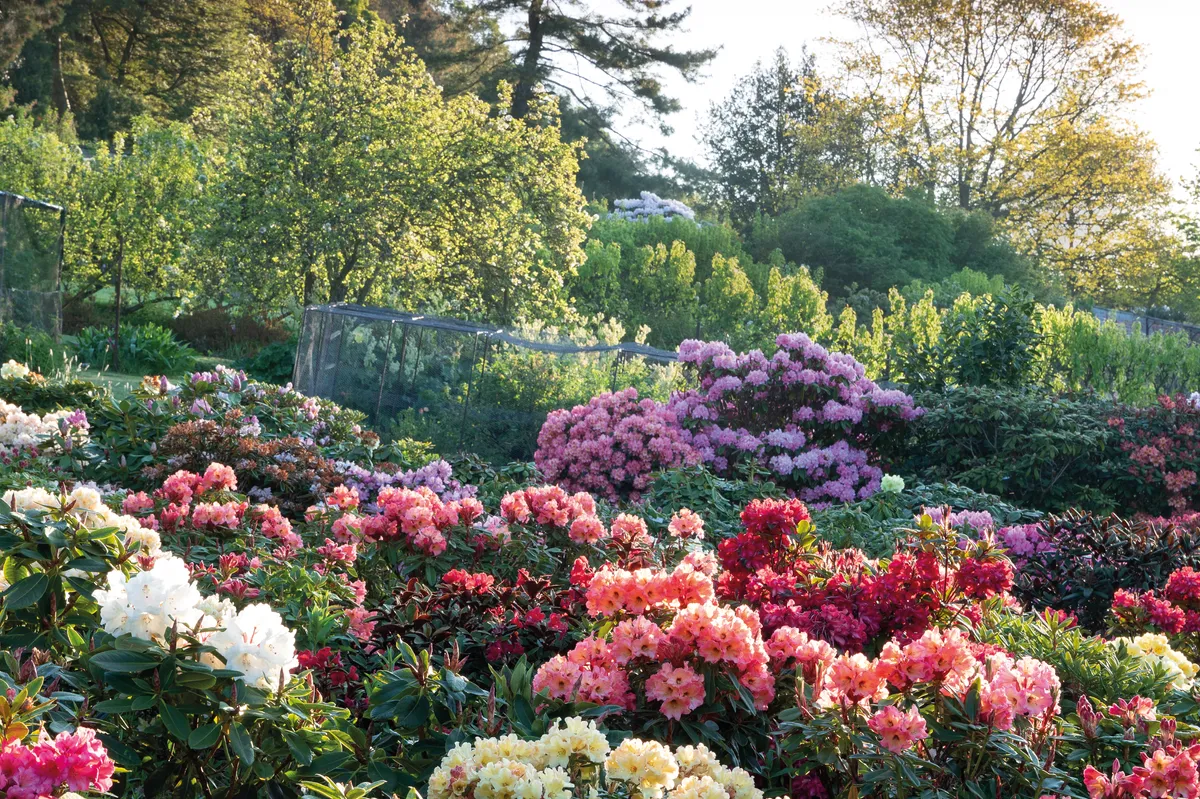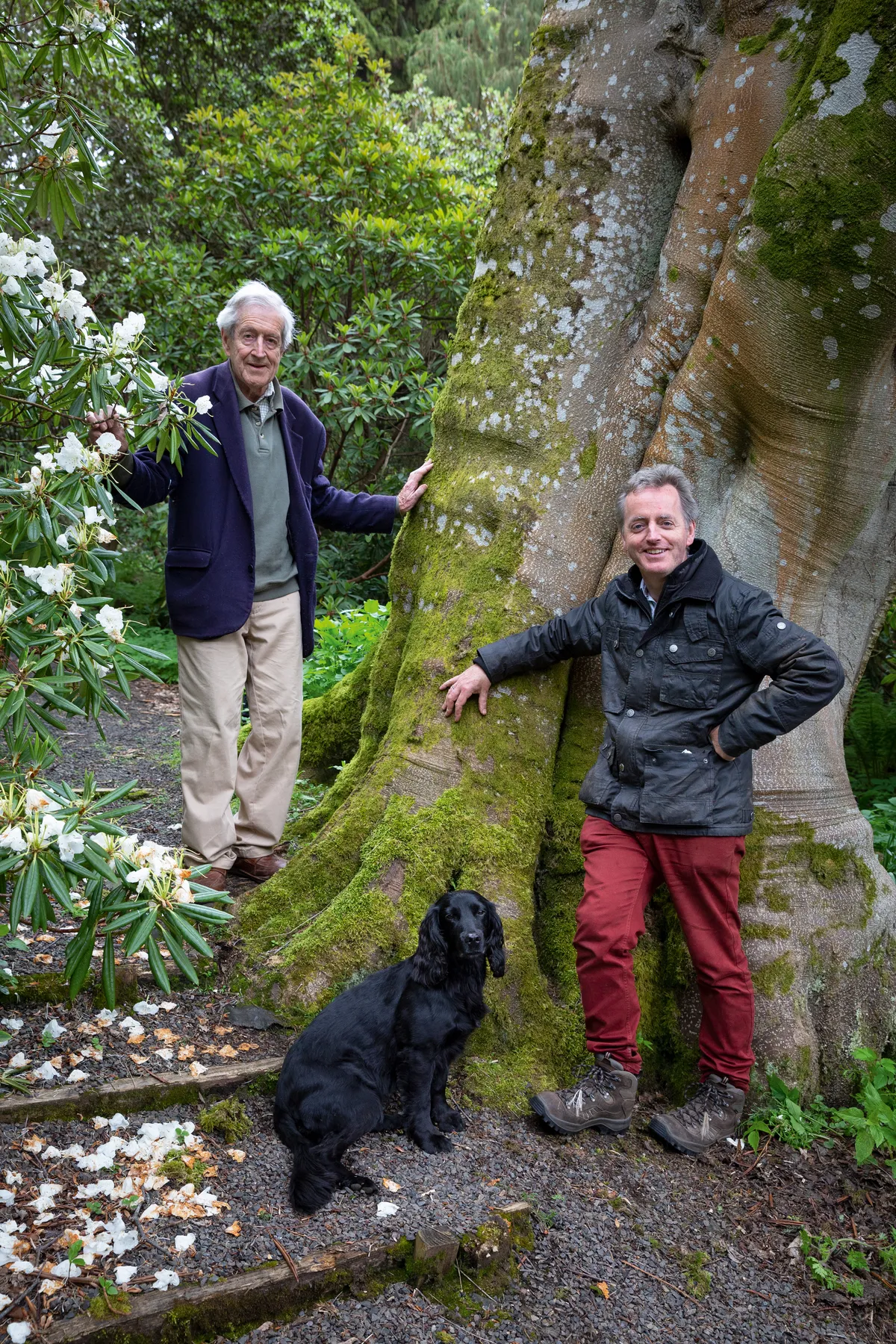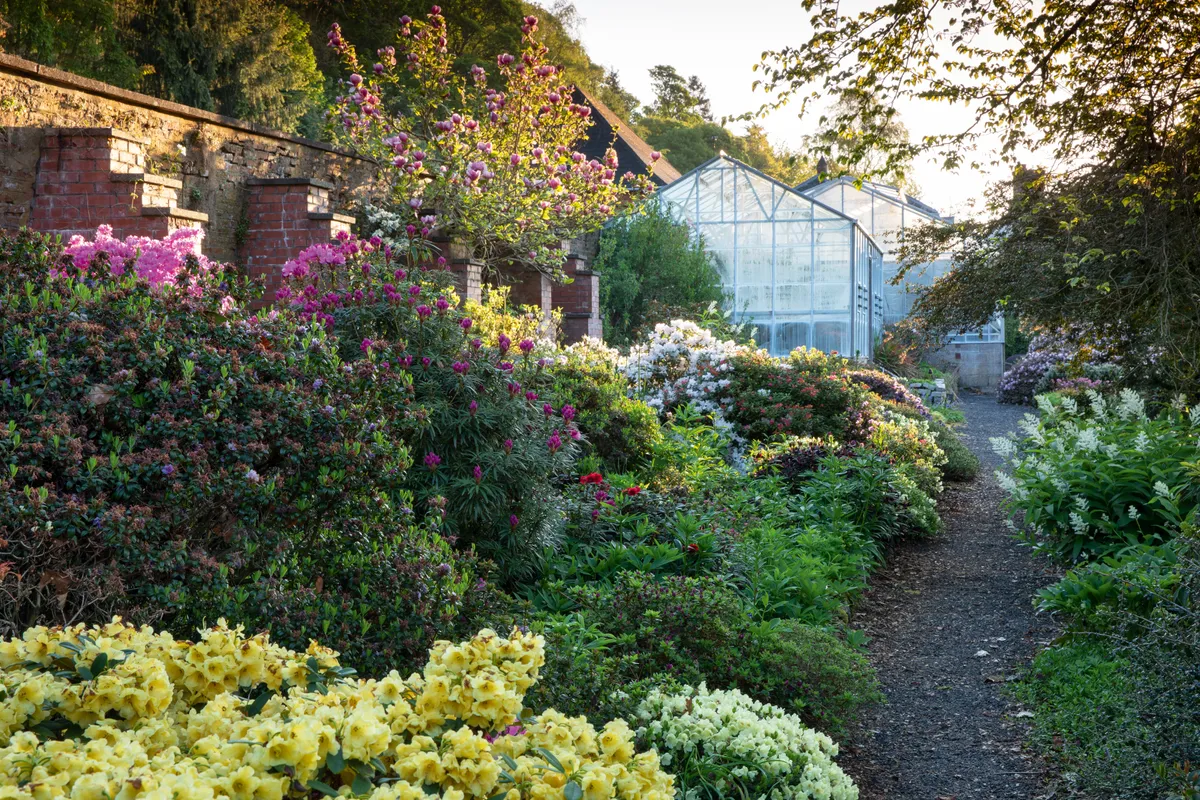At the end of the First World War a chance encounter between a young Scotsman and renowned plant hunter Reginald Farrer sparked the founding of a dynasty of plant collectors. The young man, Euan Cox, joined Farrer on an expedition to Burma (now Myanmar), a journey that would prove to be the great man’s last. Cox was left to catalogue and distribute the plants that had been found, including new Rhododendron species, kindling a passion for the genus that he passed on to his son and grandson.

Euan Cox began planting the family garden at Glendoick and developed it as a woodland garden during the 1920s and 1930s. In 1953 his son Peter established a rhododendron nursery on the site and began, with British and Chinese experts, to explore the genus’s native habitats and to collect seeds of wild species. In the 1990s Peter was joined by his son, Ken, on plant-hunting trips to Tibet and the Himalayas that resulted in Primula, Gentiana and Ilex species as well as many rhododendrons being introduced by Glendoick Gardens.

International biodiversity protocols have severely restricted plant collection in the wild so Ken, who now runs the nursery, focuses on breeding new cultivars and hybrids and on developing the gardens. Hybridisation began at Glendoick in the 1950s and the first introduction, made by Peter in 1962, was a dwarf rhododendron with pale-yellow flowers named Rhododendron ‘Chikor’. A chikor is a game bird and 30 subsequent hybrids bred here have been named after birds.

Shrubs popularly known as azaleas are part of the genus Rhododendron. In general, rhododendrons are larger shrubs than azaleas, with larger leaves. Rhododendrons are always evergreen, whereas most azaleas are deciduous. Both have remained popular plants throughout the past century thanks to the flamboyance and colour of their flowers and the range of their foliage. But they do have their detractors: “In researching my book on woodland gardens I saw that the demise of rhodos was predicted in the 1920s, the 1950s and again in the 1970s but they are still popular,” says Ken. “It helps that the National Trust and National Trust for Scotland maintain the great rhododendron gardens, making rhododendrons available to garden visitors and inspiring them with their beauty.”

A woodland garden is captivating throughout the year but Glendoick, like all woodland gardens, is facing the challenge of a changing climate and, in particular, hotter, drier summers. “One of the problems for woodland gardens is that deciduous trees are so successful at sucking moisture out of the ground that when water is scarce other plants suffer,” says Ken. Originating in monsoon areas, rhododendrons do not tolerate drought and heat well.

In response to this challenge, Ken is working with breeders in Germany, where the rhododendron market is larger than the rest of Europe put together, to graft plants on to robust rootstocks. The project is already yielding results and Ken anticipates many new vigorous hybrids that will adapt to hotter summers. Ken has absorbed two generations of study and understanding of rhododendrons. He writes and lectures extensively, and is a knowledgeable, dedicated and energetic ambassador for the genus. The enthusiasm for rhododendrons that Euan Cox found a century ago is very much still alive at Glendoick.
USEFUL information Address Glendoick, Glencarse, Perthshire, Scotland PH2 7NS. Tel 01738 860260. Web glendoick.com Open Garden Centre open daily, 9am-5.30pm throughout summer. (Monday-Saturday 9am-5pm; Sunday 10am-5pm in winter). Gardens open daily from 1 April to 31 May, 10am-4pm.
